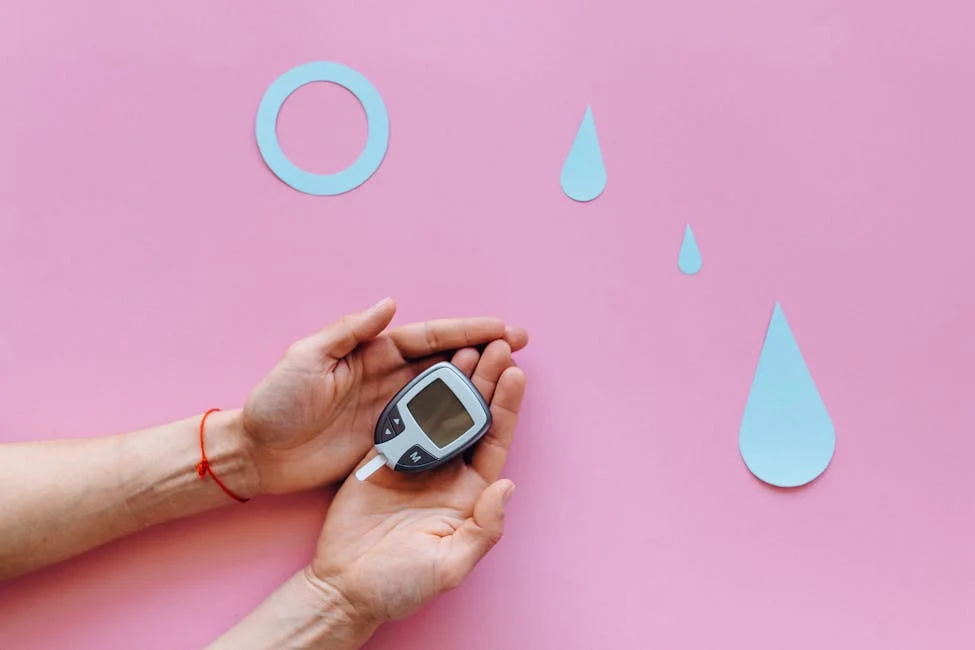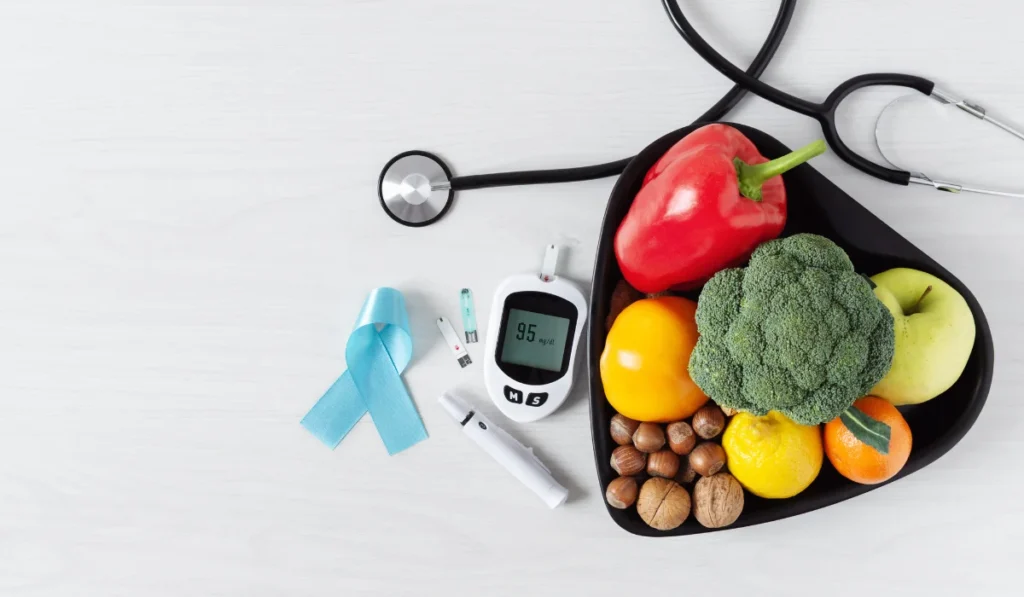What you eat is your diet; for diabetes management, it can make the whole difference. A well-planned diet helps in maintaining stable blood sugar levels, minimizing risks of complications, and enhances general good health. Sometimes, though, trying to figure out just the right foods leaves us overwhelmed. This blog aims at helping you uncomplicate diabetes through better meal planning with simple tips, including meal planning, some great diabetic-friendly recipes, and expert advice for healthy eating. Whether you are newly diagnosed or need to fine-tune your diet further, you will find the information very helpful in meeting your needs.
Understanding Diabetes and Diet

How does diet affect blood sugar levels?
This is a very critical aspect of keeping proper blood sugar control that is very important among diabetics. Every time a person eats, the body will digest the food into glycaemia, a simple sugar that gets into the blood. For those without diabetes, their bodies use insulin to balance out the amount of glucose in the blood; but with diabetes, that system is knocked off balance, and depending on what is eaten, one can exhibit high or low blood sugar. The right foods help moderate these swings. For instance, foods with refined sugars and simple carbohydrates result in a spike in blood sugar, while in foods high in fiber, level it out.
Importance of meal planning for diabetes management
Meal planning is an effective tool through which diabetes can help manage their disease. This would allow diabetic persons to maintain their balanced diet throughout the day, which is helpful in keeping a normal level of healthy blood sugar. It helps to space out meals and snacks over the day, at regular times, which prevents extreme swings in blood sugar spikes or level and dips in that level. Besides, preplanning can help avoid falling to a less healthy convenience option that may not support healthy diabetes management.
Key Components of a Diabetes-Friendly Diet
Complex carbs are key
Carbohydrates is a must for diabetes-friendly diet and complex carbohydrates are the source. Complex carbohydrates digest slowly so they provide a gradual release of glucose in the blood rather than giving you that sugar rush like simple carbs do. When this sugar is absorbed slowly, it gets a better management of blood glucose levels. Complex carbohydrates — whole grains such as brown rice, quinoa and products made from whole wheat; legumes or beans; starchy vegetables like sweet potatoes.
- Whole grains: Wheat, oats and millet.
- Legumes: Lentils, Chickpeas and Black beans.
- Starchy Vegetables: Carrots, beets and squash.
Adding them to meals helps maintain blood sugar and is another way of also getting dietary fiber into the diet, essential for good bowel health.
Importance of lean proteins
Protein The inclusion of lean protein is an important component to the diabetic diet. They barely influence blood glucose ranges and could assist you hold muscle mass ( forty one ).— this is vital in your whole metabolism. Chicken breast: Lean protein for muscle building TurkeyFish (salmon + cod)TofuTempeh Having a number of these proteins in your diet can help it from being boring and unhealthy.
- Poultry: Boneless chicken and turkey.
- Fish: Fatty types are much preferable, especially salmon that is rich in omega-3.
- Plant-based: Tofu, legumes, quinoa.
Incorporating healthy fats
Healthy fats are integral to a diabetes diet because they digest slowly to slow the absorption of glucose into the blood, thus preventing any fast spikes in sugar levels in the blood. Sources of healthy fats include avocados, nuts, seeds, and olive oil. Not only will such fats keep control over blood sugar levels, but they will also contribute to a healthy heart, which is quite important because diabetes increases the risk of developing heart disease.
- Nuts and seeds: Almonds, chia seeds, flaxseeds
- Oils: Olive oil, avocado oil—excellent on dressings or for any cooking purposes
- Other: Avocados can be added to salads, sandwiches, or used as a healthy snack
Some of the foods that shall be helpful in managing diabetes and maintaining perfect health if taken regularly.
Meal Planning Tips for Diabetes Diet

Diabetes management effectiveness relies on careful meal planning. Diabetes management is the process of knowing which foods raise blood glucose while still considering how this would be done. You can keep a tighter rein on your glucose and overall health with some strategic practices in the way you prepare and choose your meals.
Portion control and balancing nutrients
One foolproof way to control diabetes is practice portion control, thus help in the regulation of calorie intake and aid in blood sugar level stabilization An easy way to do this is by using the plate method: Eat half your plate of veggies like greens, broccoli, or white carrots with a high-quality protein (such as chicken, fish or tofu) and allow yourself ¼ grains including quinoa or whole grain pasta. Given this context of portion control, the idea is to always balance nutrients in each meal—for example a mix of all three macronutrients — carbohydrates, proteins and fats so sugars are not absorbed too quickly which helps with reductions or decreases in blood glucose.
Reading food labels and understanding glycemic index
Meal timing can affect the way you control blood sugar. Regular eating times help maintain your blood sugar level and keep it fairly stable throughout the day. Try to eat every 4-5 hours, including a good balance of macronutrient intake in each meal. You could include small snacks between meals to help avoid peaks and troughs in blood sugar levels by including a mix of proteins and healthy fats for sustained energy.
The role of timing in meals
Meal timing can affect the way you control blood sugar. Regular eating times help maintain your blood sugar level and keep it fairly stable throughout the day. Try to eat every 4-5 hours, including a good balance of macronutrient intake in each meal. You could include small snacks between meals to help avoid peaks and troughs in blood sugar levels by including a mix of proteins and healthy fats for sustained energy.
Delicious Diabetic-Friendly Recipes
Eating a diabetes-friendly diet doesn’t mean you have to give up on tasty foods. There are plenty of delicious recipes that fit into a healthy diabetes diet plan.
Breakfast ideas
Begin your day with a blood sugar balancing breakfast. Go with a bowl of steel-cut oats with some berries and a dash of flaxseeds over anything else. If you do not have a sweet tooth, how about scrambled eggs with veggies (spinach and mushrooms) wholegrain toast. Not only are these choices delicious, but you will also find a nice combination of fiber and protein with healthy fats in all.
Lunch recipes
To the lunch goer, a suitable dish that offers satisfaction and health might be a quinoa salad with chickpeas, cucumber, cherry tomatoes, dressed with a little vinaigrette with olive oil. Alternatively, a turkey and avocado wrap in a whole-grain tortilla can be made to underline having a properly balanced meal with the ability to give energy to one’s body throughout the afternoons as well.
Dinner options
Some delicious and healthy ideas for dinner There is nothing better than a good grilled salmon fillet with a side of roasted Brussels sprout and sweet potato preparation, full of omega-3 fatty acids, fiber, and good carbs. A great choice to end a wonderful day might be a chicken stir-fry with loads of colorful vegetables in a splash of soy sauce, over brown rice. These diets ensure an appetizing variety of nutrients, making sure that your dinner stays interesting and healthy at the same time for the maintenance of the proper sugar levels.
Snack Ideas for Maintaining Blood Sugar Levels
Healthy snack options
The catchphrase in diabetes management is blood sugar control, and all foods taken at snack times need to be taken into consideration. For diabetes appropriate snacks should be fiber, protein, and fat-rich, with this combination helping to balance blood sugar, as well as keeping hunger at bay makes. Some of the best snacks include;
– Almonds and other nuts: Almonds amd other nuts offer an ideal combination of small proteins, fats, and fibers.
– Greek yogurt with berries: Get plain Greek yogurt and sweeten with fresh berries. Another source of adding more fiber.
– Sliced apple with peanut butter: Nice with fiber, plus the peanut butter gives you a bit of protein.
– Veggies and hummus: Crispy veggies are very low-calorie, thus you can eat a good amount along with your hummus to give plenty of protein.
– Cheese and whole-grain crackers: A few slices of cheese with whole-grain crackers can be a satiating snack without raising your blood sugar.
Such snacks do help in eliminating hunger, but also they add to a proper diet without any compromise in taste and options.
Preparing snacks in advance
One great way to ensure that you always eat right when you snack is by preparing your snacks in advance. This also saves time and prevents you from being in the situation that you are left with no other options but unhealthy, high-sugar snacks when hunger strikes suddenly. Here are some helpful tips on how to prepare and pack snacks in advance:
– Make a weekly stash of small snack prep containers or bags filled with different snacks; this definitely helps with portion control and availability. Chop veggies and fruits at the beginning of the week.
– Being able to open the fridge and grab a few bites of veggies or fruits is so much more likely if you haven’t opened the fridge, seen nothing that is already chopped up, and then found something junky to quickly eat.
– Be ready with a batch of boiled eggs: Really, a great protein source, and with eggs in the fridge or egg bin, lasting up to days.
– Overnight oats or chia pudding: Great for that grab-and-go situation when you find yourself running out the door with no real time for food, or breakfast foods just won’t do.
By making your snacks yourself, you will be in a better place to manage what and when you eat, hence managing your blood sugar levels.
Eating Out with Diabetes

For people living with diabetes, eating out doesn’t need to be stressful. By planning a little and making good choices, you can partake in a meal out without letting your blood sugar run amuck. Some tips for Dining out with diabetes
– Pre-check the menu: most restaurants have placed their menus online. Looking at the menu before you go can guide your decision making in order to make an option that complements your overall diet.
– Request substitutions: Feel free to request different options that can increase the health factor of a dish like swapping fries for greens, requesting dressings/sauces on the side.
– Be aware of portion sizes: Restaurant portions are likely much larger than what you would eat at home. Share an entree or request a take home box as soon as your food comes.
– Opt for dishes with vegetables, lean proteins, and whole grains: These are the best choices because they have more fiber and allow you to control blood sugar. Grilled, steamed and roasted dishes are normally the healthiest ones.
– Limit or avoid sugary beverages: Replace sugary beverages with water, iced tea or diet cola to eliminate a surge in sugar.
Through thoughtful choices and preparations, you can eat out without wandering from your diabetes plan.
Conclusion and Final Tips
Effective management of diabetes requires much more than meal planning carefully and doing away with sugar. Rather, it takes care of a larger concept of the path of health promotion. By paying attention to eating a wide variety of nutrient-dense foods, aiming for balance in the consumption of food, and being regular with the timing of meals, you will have maintenance of your blood glucose within the proper limits. You become relevant to professional advice through your time and a well-informed person about your food in order to be in better control of your health.
Key Takeaways for Your Diabetic Diet
– Try to maintain a regular interval between meals to avoid wide fluctuations in blood sugar levels.
– The number of carbs, proteins, and fats must be well balanced during every meal.
– Keep a regular check on blood sugar levels and adjust intake of specific food items accordingly.
– Keep yourself hydrated and avoid sugary and processed foods.
– Always make your diet your own, considering what will work best for your life and with your other health problems that may affect your diet.
Remember, it’s the little stride you make that matters in making different changes towards health. Here’s to a healthier and happier you!